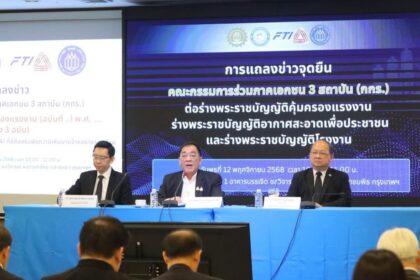Why this question matters now
Taiwan contingency planning is reshaping the way governments think about security in Northeast Asia. Washington has signaled that United States Forces Korea (USFK), long focused on deterring the North, may also support regional missions if a crisis erupts over Taiwan. That shift raises a consequential question for the peninsula and beyond. Would North Korea move to assist China if a war in the Taiwan Strait drew in the United States and its allies?
- Why this question matters now
- What the China North Korea treaty actually says
- Would Pyongyang come to China’s aid, and in what form
- What North Korea can and cannot do militarily
- The most likely playbook, distractions without full war
- South Korea’s role and planning dilemmas
- If US forces in Korea pivot toward China
- Signals from Beijing and Pyongyang
- Scenarios to watch
- What to Know
The answer carries weight well beyond the strait. US treaties with Japan and South Korea, and the Taiwan Relations Act, bind the United States into overlapping obligations across a crowded theater. Japan lies along the same maritime chokepoints that would matter in a Taiwan fight, while US bases in South Korea offer valuable airfields, ports, and logistics nodes. A major conflict would not stay compartmentalized. Any move by China against Taiwan could create opportunities and temptations for Pyongyang, while any spike in tensions on the peninsula could complicate US or Japanese decisions in the strait.
Recent history points to deeper alignment among China, Russia, Iran, and North Korea, even if it falls short of a formal alliance. Pyongyang has supported Moscow’s war effort in Ukraine with large munitions transfers. Russia and North Korea announced a new mutual aid agreement in 2024. These developments show Pyongyang’s readiness to back partners that advance its interests, and they raise the stakes if China and the United States clash over Taiwan.
What the China North Korea treaty actually says
China and North Korea signed a Treaty of Friendship, Cooperation and Mutual Assistance in 1961. Its core is Article II, a mutual defense clause requiring each side to provide military and other aid if the other is attacked. The treaty explicitly applies to the Far East, and North Korea recognizes Taiwan as part of China. On paper, if China declares it is under attack during a Taiwan conflict, Pyongyang is obligated to help.
There is a critical ambiguity, however. The treaty does not spell out who fired first. That gap reflects tensions from the Sino Soviet split and Beijing’s desire to preserve room to maneuver. After the Cold War, China narrowed its security commitment to North Korea. Chinese officials stated in 2017 that Beijing would not come to Pyongyang’s aid if North Korea started a war. Even so, both sides renewed the treaty on its 60th anniversary in 2021 without changes to Article II.
In a Taiwan scenario, Beijing would likely argue that it is under attack once US forces intervene against Chinese operations. That framing would place North Korea under a formal obligation to assist, regardless of whether China initiated hostilities across the strait. How Pyongyang fulfills that obligation, and at what intensity, is the real strategic question.
Would Pyongyang come to China’s aid, and in what form
North Korea’s support for Russia offers a useful guide. Pyongyang supplied artillery shells and other materiel that helped Moscow sustain operations in Ukraine. In June 2024, Russia and North Korea signed a new mutual defense pact that pledged mutual assistance if either is attacked. The treaty is not identical to the 1961 pact with China, but it signals that Pyongyang sees value in demonstrating solidarity with partners fighting the United States and its allies.
Helping China need not mean fighting US forces head to head. North Korean leaders are pragmatic about risk. They know that direct strikes on US bases in Japan, Guam, or South Korea could invite devastating retaliation. They also know that the most valuable help they can give Beijing might be indirect, tying down US and South Korean resources on the peninsula while China concentrates on the strait.
In 2021, China’s top leader sent a message marking the 60th anniversary of the treaty, highlighting the comradeship between Beijing and Pyongyang. He emphasized continuity and strategic alignment.
Our two countries should continually reach new heights in a rapidly changing world.
Chinese statements of solidarity do not guarantee military moves in a crisis, but they set expectations. Both sides would likely coordinate on timing, signaling, and limits if the Taiwan Strait erupts. Pyongyang’s aim would be to demonstrate treaty loyalty while avoiding a direct clash with US forces that could threaten regime survival.
What North Korea can and cannot do militarily
North Korea’s military is structured to fight on and near the peninsula, not to project power across seas. The navy is small and aging. Amphibious lift is limited. There is no credible capability to escort convoys or to threaten the advanced surface fleets of the United States, Japan, or South Korea. Any attempt to sail significant forces into contested waters near Taiwan would be high risk and low payoff.
Long range missile forces are different. Pyongyang fields a growing inventory of ballistic and cruise missiles, and it is developing space launch and reconnaissance capabilities. Even so, launching missiles at US or allied bases to aid China would be an enormous gamble. The United States and its partners would respond quickly. North Korea’s leadership understands that a strike outside the peninsula could escalate beyond its control.
Closer to home, an offensive to seize Seoul while the United States focuses on Taiwan would be a poor bet. South Korea’s military is modern and highly capable. It holds decisive advantages in airpower, precision munitions, and surveillance. A North Korean attempt to conquer the South would likely fail and could end the regime. Pyongyang’s more realistic options sit below that threshold.
The most likely playbook, distractions without full war
If a Taiwan fight begins, expect North Korea to lean on pressure tactics that stop short of a major clash. These moves grab headlines, trigger allied alerts, and force US and South Korean commanders to keep assets close to the peninsula. They also give Pyongyang bargaining leverage with Beijing, Washington, and Seoul.
- Resuming high volume loudspeaker broadcasts and information operations along the Demilitarized Zone
- Drone overflights and infiltration attempts to probe defenses and embarrass Seoul
- Maritime incursions near the Northern Limit Line in the Yellow Sea and the East Sea
- Short and medium range ballistic missile launches, some on lofted trajectories to stress missile defenses
- Space launch activities and long range cruise missile tests framed as scientific or routine drills
- Cyber intrusions against government agencies, defense firms, and financial networks in South Korea, Japan, and the United States
- Limited artillery fire demonstrations in contested maritime zones
Each step is reversible, deniable to a degree, and calibrated to avoid crossing red lines. From Beijing’s vantage point, such activity complicates US planning without forcing China into a wider war. Privately coordinated pacing and messaging would help both capitals avoid misunderstandings while extracting political gains.
South Korea’s role and planning dilemmas
Seoul sits at the center of this strategic triangle. More than 90 percent of South Korea’s maritime trade transits the Taiwan Strait and the South China Sea. Studies estimate that a prolonged disruption could cut South Korean GDP by more than 20 percent. South Korea’s chip and industrial supply chains are intertwined with Taiwan’s. A Taiwan crisis is not a distant problem for Seoul. It strikes at core economic and security interests.
South Korean and US officials have discussed strategic flexibility, the idea that USFK could support missions beyond the peninsula. US facilities at Camp Humphreys in Pyeongtaek, Osan and Kunsan air bases, and the port complex around Busan provide major lift and sustainment capacity if a Taiwan conflict drags on. At the same time, South Korean leaders want cast iron assurance that the peninsula remains secure if US assets flow out. The priority in Seoul is clear. Prevent North Korean miscalculation first, then decide what support Washington can expect.
South Korea’s president has described Taiwan as more than a cross strait dispute. In public remarks, President Yoon Suk yeol said the Taiwan issue is “a global issue” and that preserving peace and stability in the strait is “an essential element in security and prosperity in the Indo Pacific region.” Those words were matched by growing, if still cautious, coordination with Washington and Tokyo on crisis planning.
If US forces in Korea pivot toward China
Washington has debated rebalancing forces in Northeast Asia to meet the China challenge. Options discussed include shifting a portion of the roughly 28,500 US troops in South Korea to other locations in the Indo Pacific. Advocates see USFK as the closest large allied presence to Beijing and a valuable logistics hub in a long fight. Others warn that drawing down could increase the risk of North Korean adventurism.
There is another risk. Using USFK for China focused missions provides North Korea and China a shared narrative about encirclement. It could harden their cooperation, with Russian backing, even if their interests are not identical. Analysts caution that this alignment is transactional and limited by mistrust. Still, tighter coordination among them during a Taiwan contingency would complicate US planning and strain resources.
For Seoul, command arrangements matter. Transferring wartime operational control to a South Korean commander has been a long running goal. If a Taiwan crisis breaks out before that transition is complete, a US general would still lead combined forces on the peninsula. That legal and operational fact could tie South Korea more tightly to US decisions in the strait, even as it tries to deter North Korea at home.
Signals from Beijing and Pyongyang
China wants stability on the peninsula. It seeks to avoid scenarios that could produce regime collapse in the North, refugee flows, or a direct clash with the United States. Beijing has at times backed UN sanctions on Pyongyang and indicated that its treaty obligations to North Korea apply if North Korea is attacked, not if it starts a war. Yet China also provides economic lifelines and, at times, looks the other way at sanctions evasion when it serves broader strategy.
Pyongyang sees advantage in a world of parallel crises. The Ukraine war brought diplomatic and material gains with Moscow. A Taiwan conflict could bring another chance to extract concessions, technology, or aid from China. The likely result is a carefully measured show of loyalty to Beijing, delivered through provocations aimed at Seoul and Washington rather than direct support to Chinese forces near Taiwan.
Scenarios to watch
There is no single script for how a Taiwan conflict might unfold or how North Korea would respond. The spectrum ranges from psychological pressure to high intensity war. Three scenarios illustrate the choices and risks.
Intense gray zone pressure
China increases air and naval activity around Taiwan without firing shots, using coast guard cutters, maritime militia, and frequent sorties to exhaust Taipei. In this environment, North Korea likely ramps up missile tests, drone incursions, and cyber operations against South Korea and Japan. The aim is to fix US and South Korean forces on the peninsula and inhibit the use of US bases for sustained operations. Beijing gains distraction at little cost. The risk is an accident or misreading near the Demilitarized Zone triggering a rapid escalation cycle.
Blockade or quarantine of Taiwan
China attempts to choke off shipping to and from Taiwan with inspections and exclusion zones. South Korea needs secure sea lines of communication for energy and trade. It could provide logistical support to US forces and deploy naval units to protect traffic near key routes, while maintaining a high readiness posture against North Korea. Pyongyang would likely stage frequent demonstrations near the Northern Limit Line and launch missiles over the sea to raise tension without inviting retaliation. China benefits from additional allied bandwidth consumed far from the strait.
Full invasion and US intervention
China launches a large scale assault on Taiwan and strikes US or Japanese targets. The United States mobilizes a coalition response. At this point, Beijing would claim it is under attack by external forces, activating the language of its 1961 treaty with North Korea. Pyongyang’s most probable contribution remains indirect. Expect mobilizations, large missile salvos into surrounding waters, and severe cyber attacks to force the United States and South Korea to keep air and missile defenses, strike assets, and command attention on the peninsula. Any North Korean attack on US bases or Japan would risk a US response that Pyongyang wants to avoid.
What to Know
- China and North Korea’s 1961 treaty includes a mutual defense clause that Beijing could invoke if US forces intervene against China in a Taiwan war.
- The treaty is ambiguous about who starts a conflict, but both capitals renewed it in 2021 without changing the core obligation.
- North Korea’s support for Russia in Ukraine, plus a 2024 Russia North Korea pact, shows Pyongyang’s willingness to back partners facing the West.
- North Korea lacks the naval power to help China directly near Taiwan and is unlikely to strike US bases, given the risk of devastating retaliation.
- The most likely North Korean response is a campaign of provocations against South Korea, including missiles, drones, maritime incursions, and cyber attacks.
- These actions would tie down US and South Korean forces, easing pressure on China without triggering full war on the peninsula.
- South Korea’s economy and security are closely tied to the Taiwan Strait, but Seoul’s first priority is deterring North Korean miscalculation.
- Using US forces in Korea for China focused missions could tighten coordination among China, North Korea, and Russia, even if their cooperation has real limits.
- Beijing seeks stability on the peninsula and would likely coordinate with Pyongyang to manage risks during a Taiwan crisis.
- Dual theater planning by the United States, Japan, and South Korea is essential to avoid being stretched thin if crises in the strait and on the peninsula overlap.












